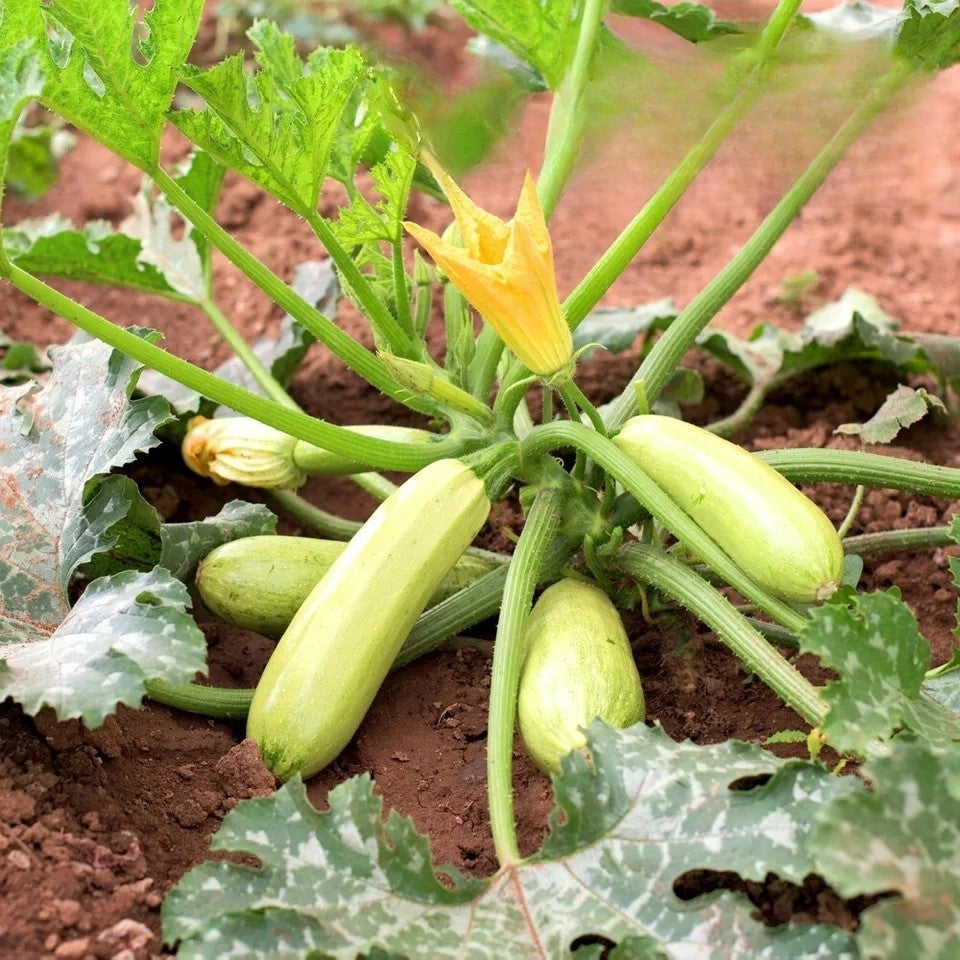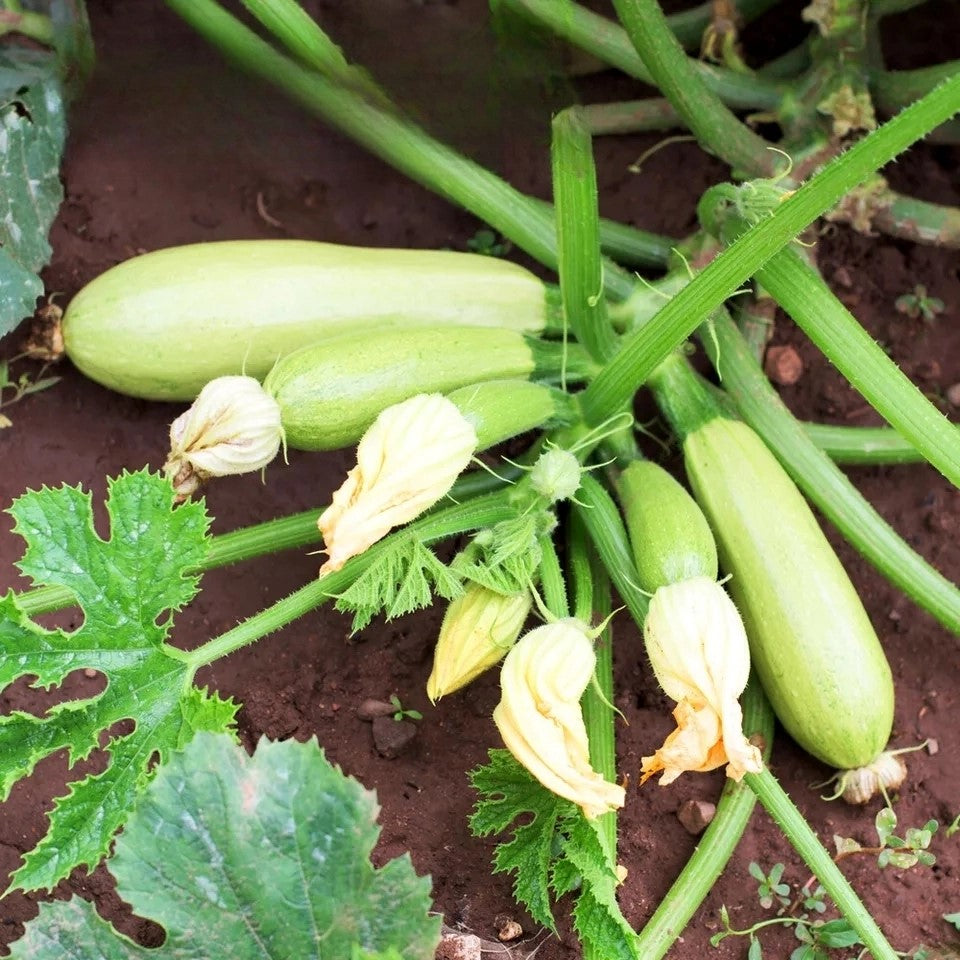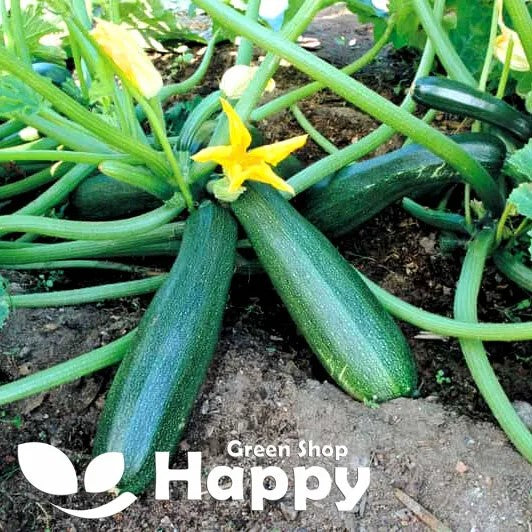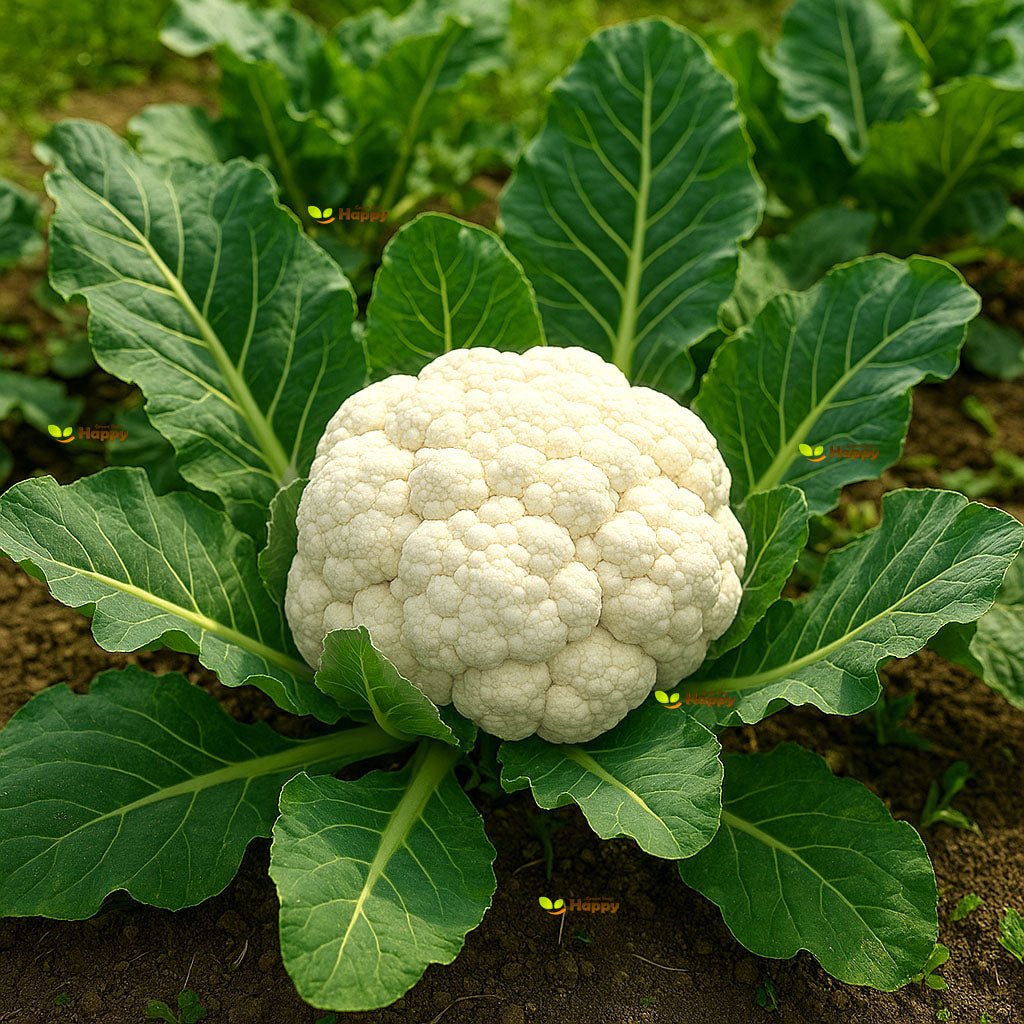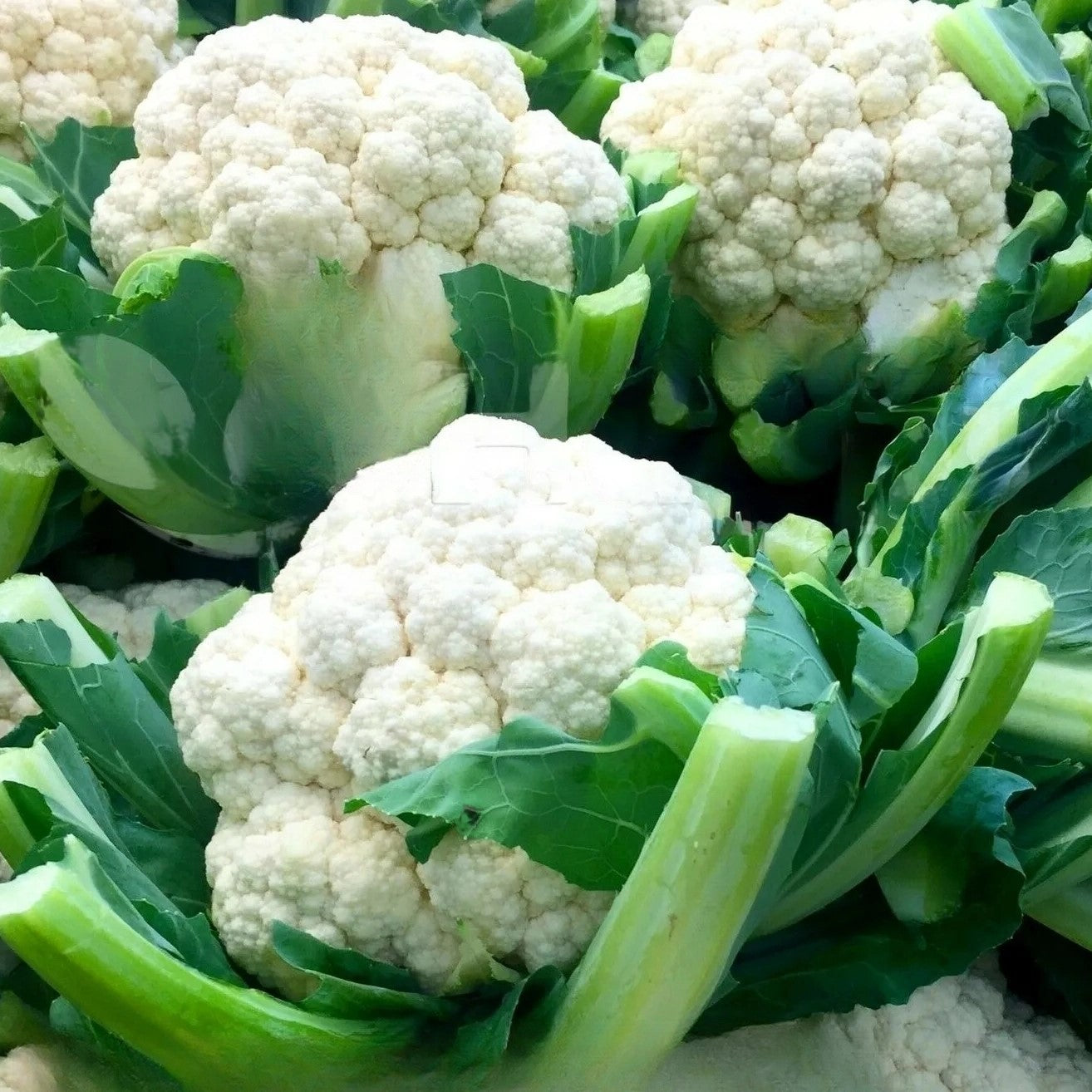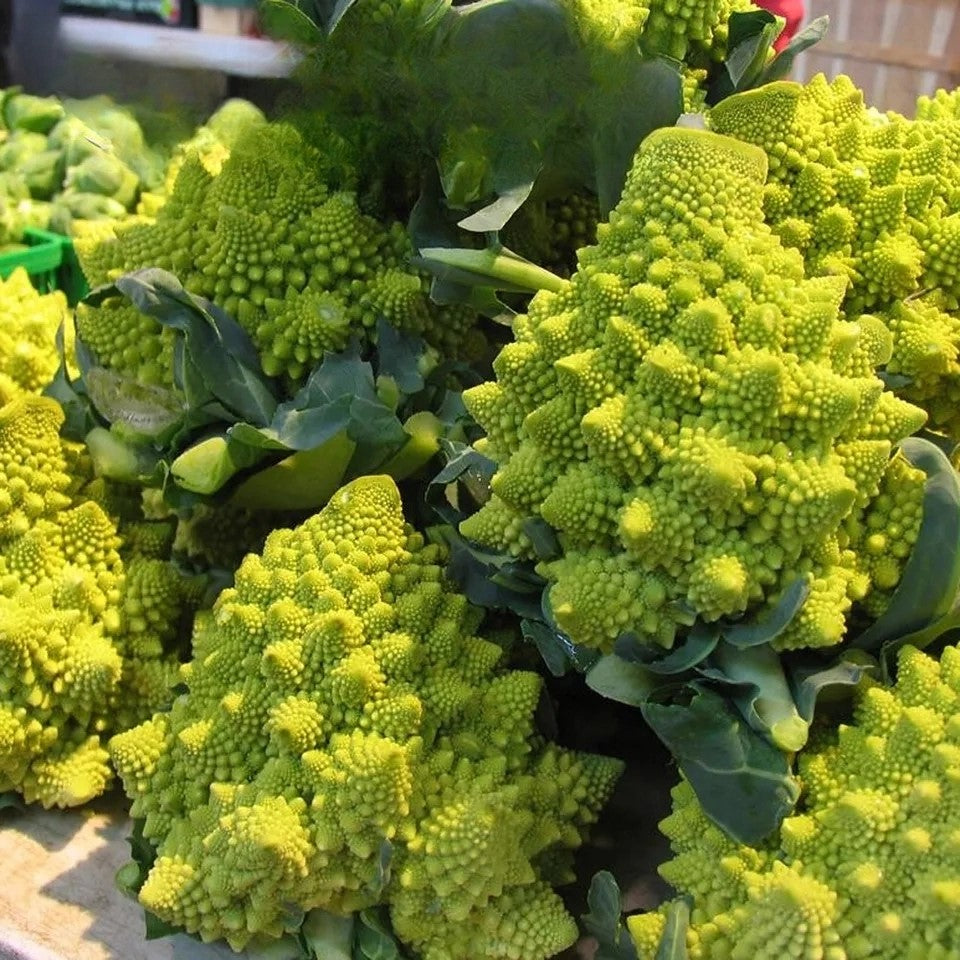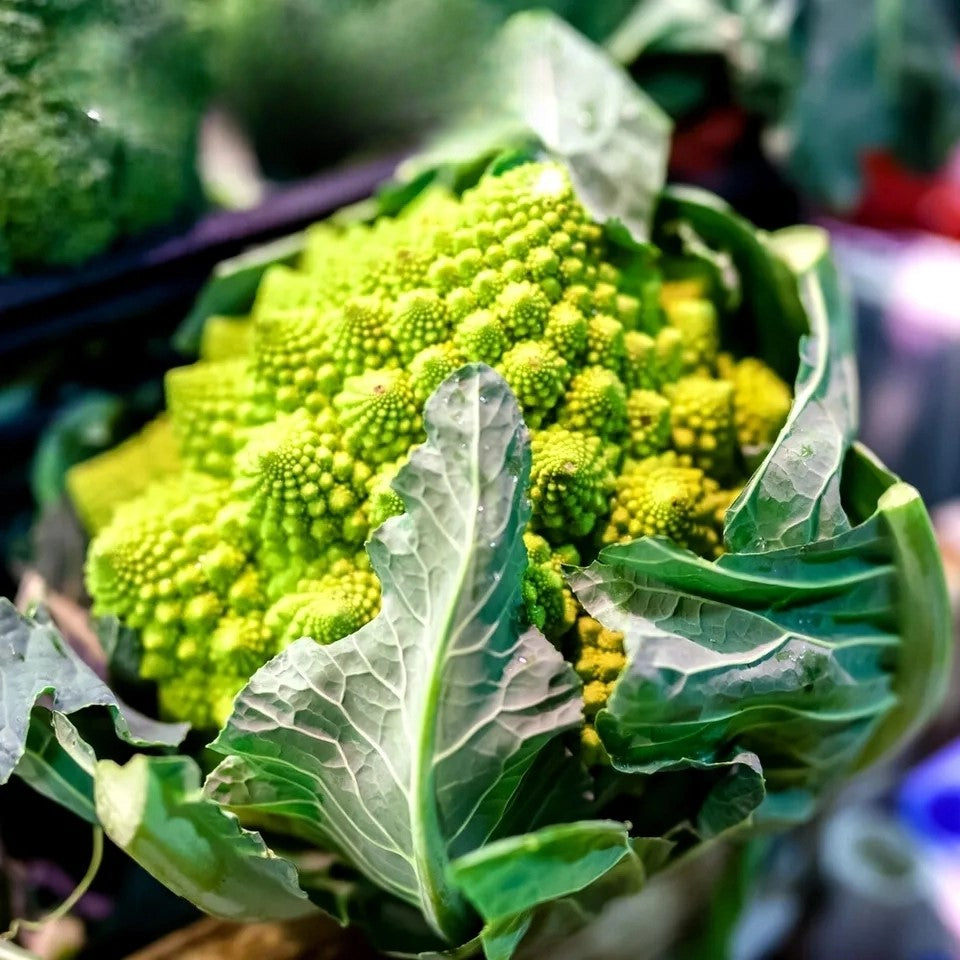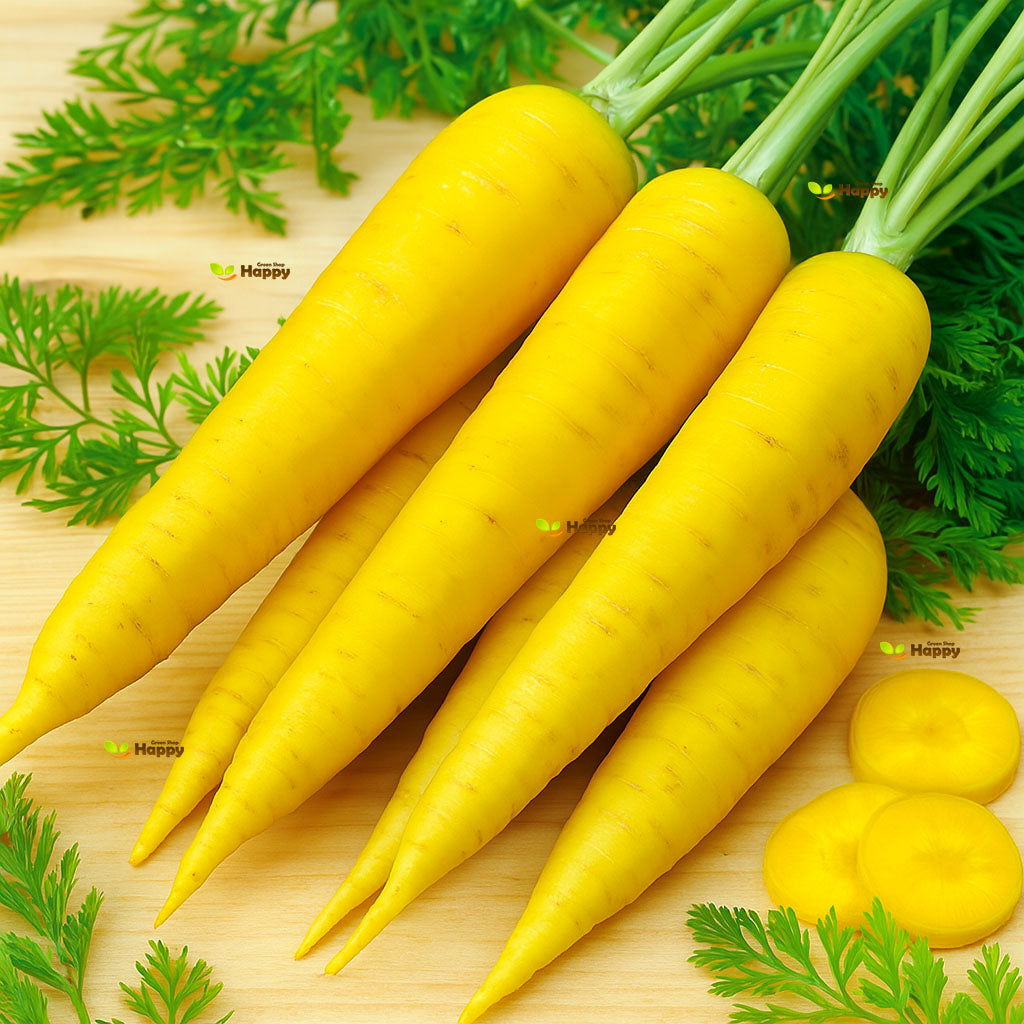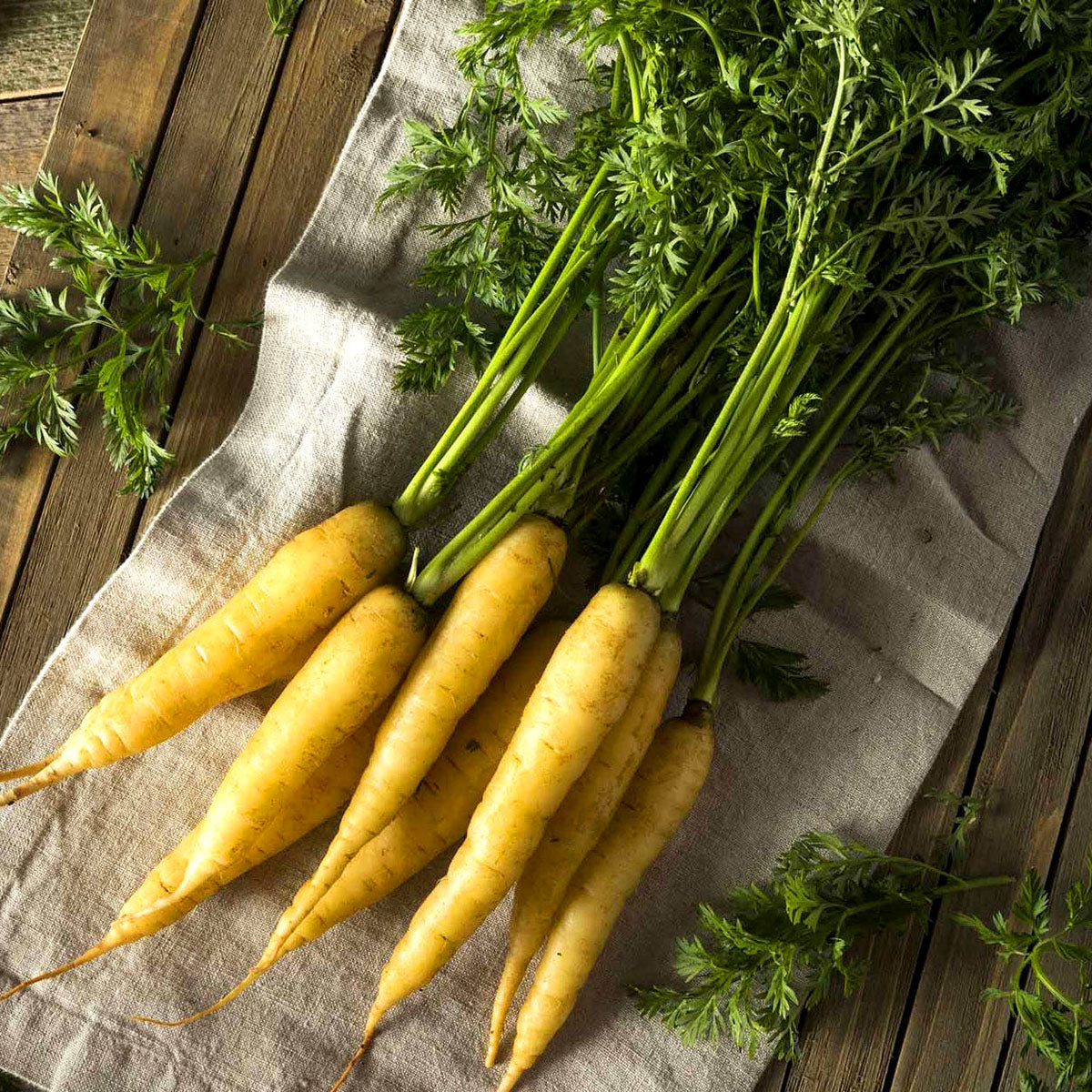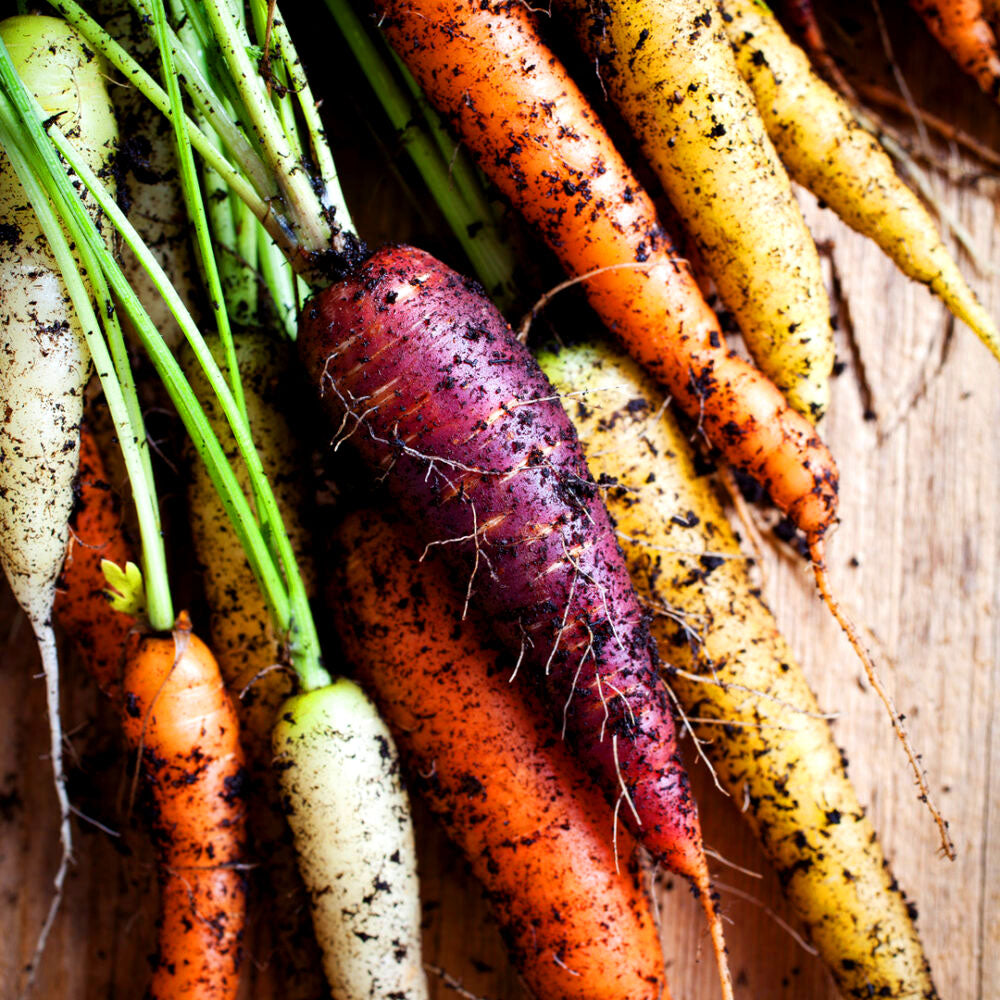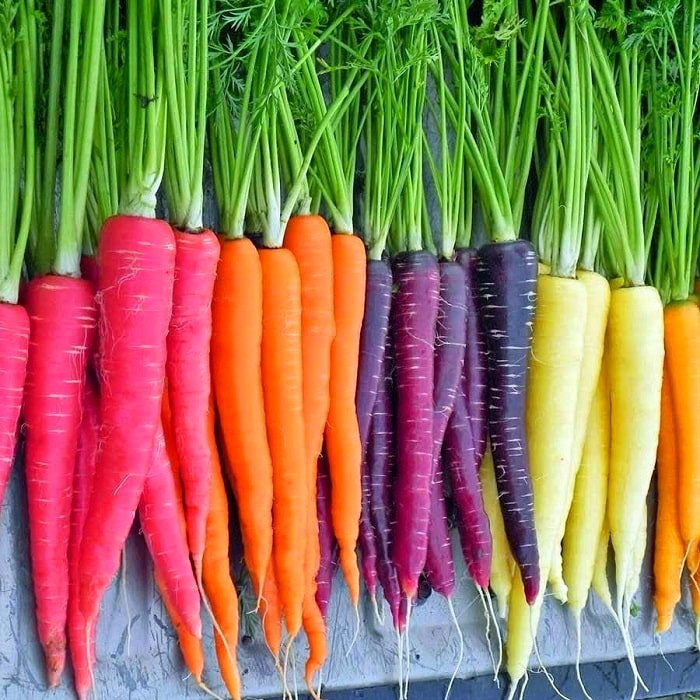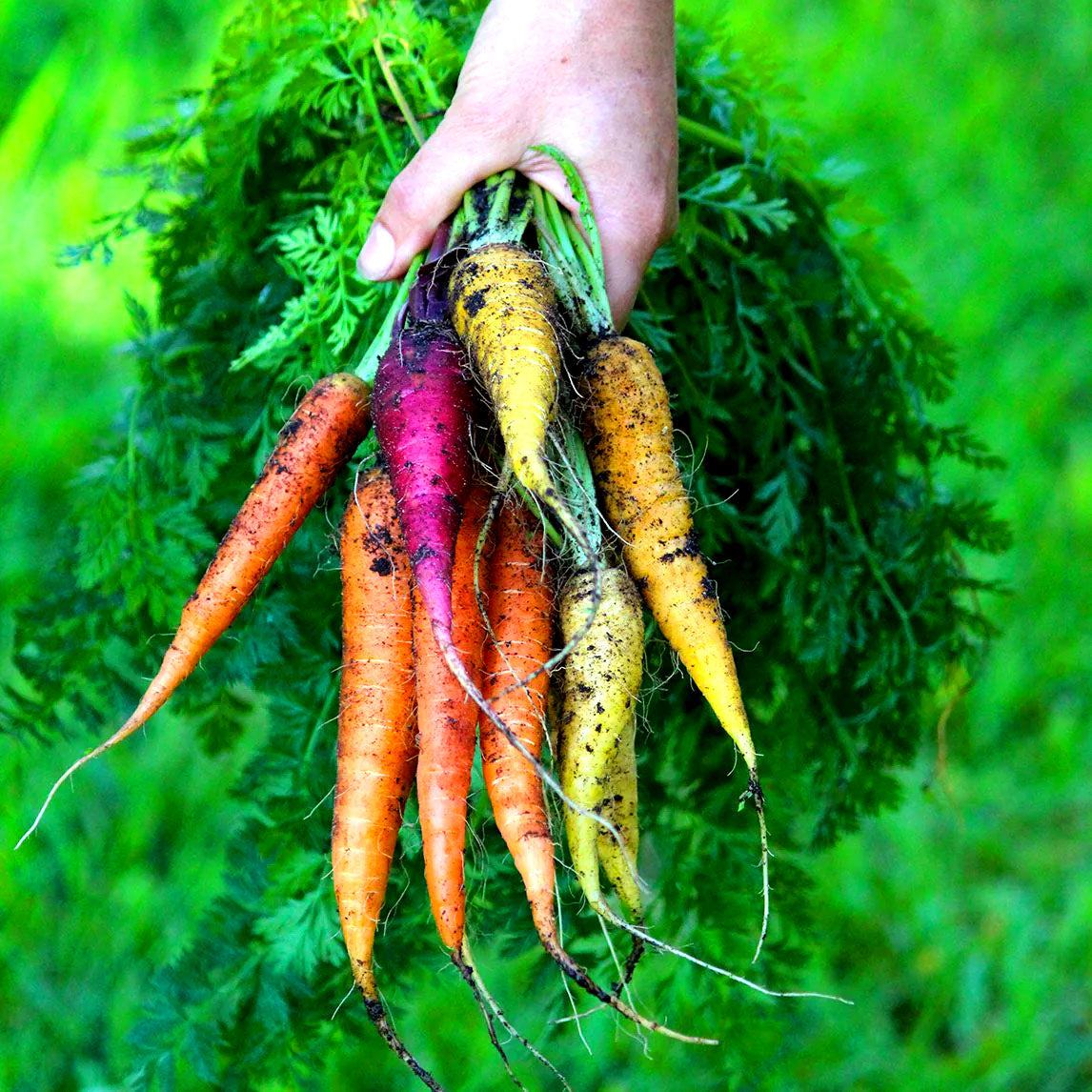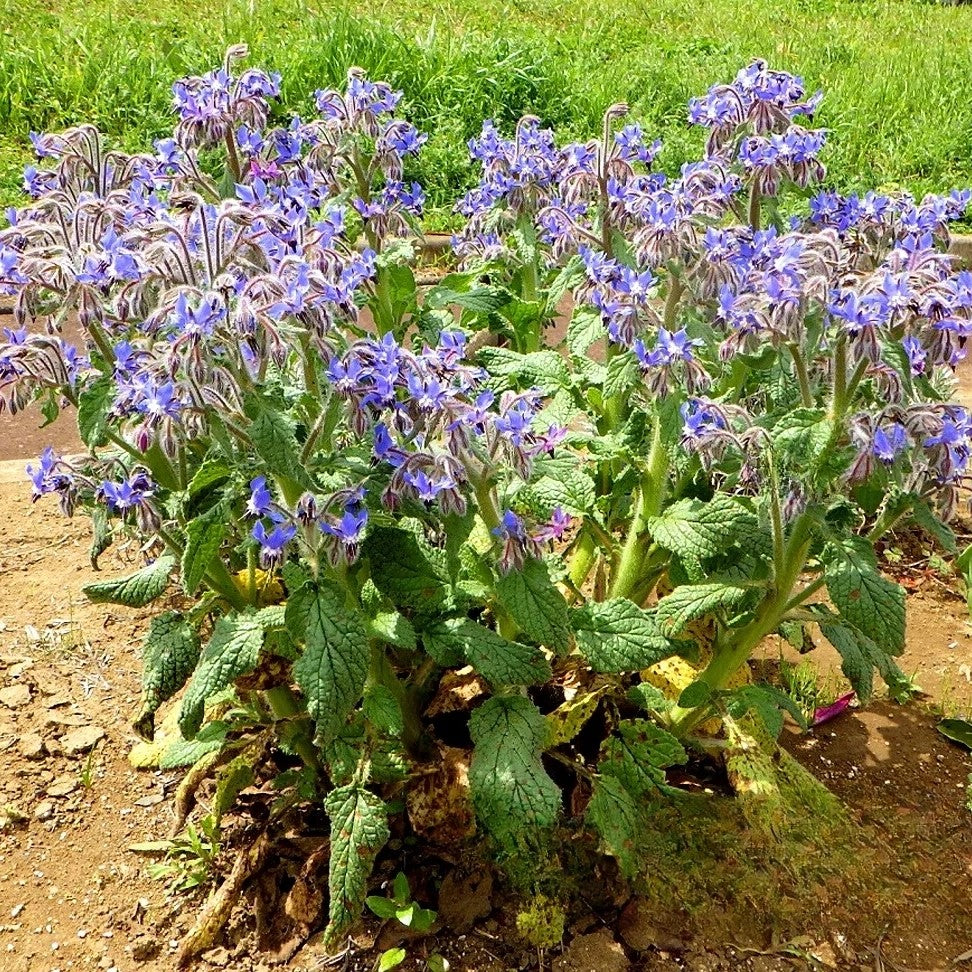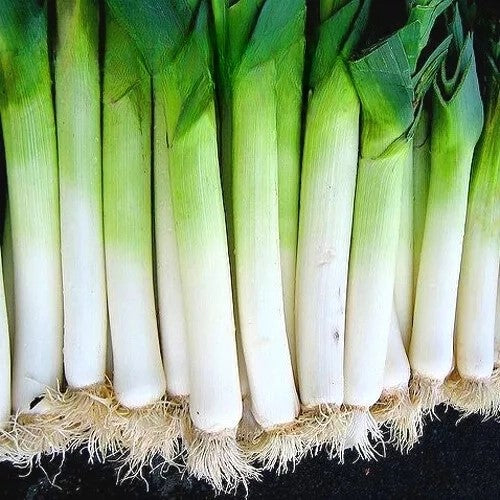Sort by:
49 products
49 products
Courgette 'Bolognese' – Seeds (Cucurbita pepo)
Bring the taste of Italy to your garden with Courgette 'Bolognese', a prolific heirloom variety prized for its slender, dark green fruits and tender, flavorful flesh. Perfect for summer kitchens, these versatile courgettes are ideal for sautéing, grilling, stuffing, and fresh salads. Easy to grow and highly productive, 'Bolognese' is a favorite among gardeners seeking reliable yields and gourmet flavor.
How to Grow
. Sow indoors: March – May, 1–2 cm deep in pots
. Transplant outdoors: After last frost, spacing 70–90 cm apart
. Sow outdoors: May – June in fertile, well-drained soil
. Prefers full sun with regular watering
. Harvest: 15–20 cm long for the best texture and flavor
Key Features
. Italian heirloom zucchini with dark green skin
. Tender, mild-flavored flesh suitable for a variety of dishes
. High-yielding and early-producing variety
. Ideal for sautéing, grilling, stuffing, or salads
. Compact plant suitable for home gardens
Ideal For
. Fresh summer cooking and Italian cuisine
. Home gardeners seeking reliable yields
. Gourmet dishes including stuffed or roasted courgettes
. Small vegetable beds or allotments
Sowing & Harvest
. Sow: March – June
. Harvest: June – September
Quick Tip
Pick courgettes when young and slender to ensure the most tender flesh and to encourage continued fruiting.
Courgette 'Astra Polka' Seeds (Cucurbita pepo)
Add a splash of color to your vegetable patch with Courgette 'Astra Polka', a prolific and compact variety producing golden-yellow fruits. This reliable courgette has a mild, sweet flavor and tender flesh, making it perfect for grilling, stir-fries, or summer salads. Its vibrant fruits stand out both in the garden and the kitchen.
How to Grow
-
Sow indoors in April–May or directly outdoors after frost.
-
Use rich, well-drained soil in full sun.
-
Sow 2–3 seeds 2 cm deep in pots or stations.
-
Thin to one strong plant per station, spacing 60–80 cm apart.
-
Harvest young fruits regularly to encourage continuous production.
Key Features
-
Compact, high-yielding variety
-
Attractive golden-yellow courgettes
-
Mild, sweet flavor with tender texture
-
Perfect for grilling, roasting, stir-fries, and salads
-
Heavy and reliable cropper all season
Ideal For
-
Home gardeners with limited space
-
Garden-to-table cooking
-
Summer dishes and fresh eating
-
Adding color to both plate and harvest basket
Sowing
-
Best time: April to June
-
Depth: 2 cm
-
Spacing: 60–80 cm between plants
-
Position: Full sun, fertile soil
-
Harvest: From July onwards
Quick Tip
-
Pick fruits when small (10–15 cm) for the best flavor and to keep plants producing abundantly.
Cauliflower ‘All The Year Round’ – Seeds (Brassica oleracea)
Description:
Enjoy reliable harvests with Cauliflower ‘All The Year Round’ (Brassica oleracea), a versatile and hardy variety suitable for spring, summer, and autumn cropping. It produces compact, white heads with excellent flavor and texture, ideal for steaming, roasting, or use in soups and casseroles. Easy to grow from seed, this dependable cauliflower performs well in most soils and weather conditions, making it perfect for home gardens and allotments.
Key Features
-
Reliable, hardy variety for multiple seasons
-
Compact, firm white curds with great flavor
-
Suitable for spring, summer, and autumn harvests
-
Tolerant of varying weather conditions
-
Easy to grow from seed
Ideal For
-
Home and kitchen gardens
-
Allotments and vegetable plots
-
Fresh cooking, freezing, and preserving
-
Year-round vegetable production
Sowing & Growing
-
Sow Indoors: January–April
-
Sow Outdoors: March–June
-
Transplant Outdoors: April–July
-
Germination: 7–14 days at 15–20°C
-
Spacing: 45–60 cm apart
-
Light: Full sun
-
Soil: Fertile, firm, well-drained
Care Tips
-
Water regularly, especially during dry periods
-
Protect young plants from pests and frost
-
Add compost or organic matter before planting
-
Harvest when heads are firm and white
Cauliflower 'Octavian' – Seeds (Brassica oleracea)
Cauliflower 'Octavian' is a reliable mid-season variety producing large, firm, creamy-white heads with a mild, delicate flavor. Ideal for steaming, roasting, soups, and gratins, it is a versatile addition to any vegetable garden.
This hardy variety performs well in a range of soils, offers excellent disease resistance, and is suitable for home gardens, allotments, and small-scale cultivation.
How to Grow
-
Sow indoors: February – April
-
Transplant outdoors: April – June
-
Depth: 0.5–1 cm
-
Spacing: 40–50 cm between plants, rows 60–70 cm apart
-
Position: Full sun, sheltered from strong winds
-
Soil: Fertile, well-drained, rich in organic matter
-
Watering: Keep soil consistently moist for optimal head development
Key Features
-
Mid-season cauliflower with large, firm, creamy-white heads
-
Mild, tender flavor suitable for steaming, roasting, soups, and gratins
-
High-yielding and reliable growth
-
Excellent disease resistance
-
Ideal for home gardens, allotments, and small-scale cultivation
Harvest
-
Harvesting period: July – September
-
Harvest heads when compact and firm to ensure the best flavor and texture.
Short Tip
Blanch the heads by folding outer leaves over them to maintain whiteness and protect from sunburn.
Cauliflower 'Romanesco Natalino' – Seeds (Brassica oleracea)
Cauliflower ‘Romanesco Natalino’ is an extraordinary Italian heirloom, admired for its striking spiral, lime-green heads with a unique fractal pattern. More than just a showpiece, this variety is nutritious, delicious, and versatile – offering a slightly nutty, delicate flavor that works well roasted, steamed, or enjoyed raw in salads. Highly ornamental yet productive, it’s a standout addition to any vegetable garden.
How to Grow
-
Sow indoors: February – May in seed trays or pots.
-
Sow outdoors: May – June, directly into well-prepared soil.
-
Transplant: Harden off young plants and set them 60 cm apart in fertile ground.
-
Position: Full sun, rich, firm soil with good drainage.
-
Care: Keep soil consistently moist and protect young plants from pests.
Key Features
-
Stunning lime-green spiral florets
-
Mild, nutty flavor – more delicate than standard cauliflower
-
Traditional Italian variety
-
Attractive and productive crop
Ideal For
-
Kitchen gardens and allotments
-
Chefs and home cooks looking for something unique
-
Roasting, steaming, or eating raw
-
Eye-catching centerpiece in vegetable beds
Sowing & Harvest
-
Sow: February – June
-
Harvest: September – November
Quick Tip
For the best curds, ensure consistent watering and feed with a high-potassium fertiliser as heads develop.
Carrot Solar Yellow – 300 Seeds (Daucus carota) Heirloom
Description:
Grow bright, sweet carrots with Carrot Solar Yellow (Daucus carota) Heirloom. This heirloom variety produces vibrant golden-yellow roots with a tender texture and mild, sweet flavor. Compact and easy to cultivate, Solar Yellow carrots are perfect for salads, roasting, and fresh snacking. Ideal for home gardens, raised beds, and container planting, they provide reliable harvests and a splash of color to your vegetable patch.
Key Features
-
Vibrant golden-yellow heirloom carrots
-
Sweet, tender, and flavorful roots
-
Suitable for salads, roasting, and fresh eating
-
Easy to grow and maintain
-
Heirloom variety with reliable harvests
Ideal For
-
Kitchen gardens and raised beds
-
Container planting for home gardeners
-
Fresh eating, salads, and culinary use
-
Heirloom vegetable enthusiasts
Sowing & Growing
-
Sow Outdoors: March–June
-
Germination: 10–20 days at 15–20°C
-
Spacing: 3–5 cm between plants in rows 25–30 cm apart
-
Light: Full sun
-
Soil: Loose, well-drained, fertile soil
Care Tips
-
Keep soil consistently moist during germination
-
Thin seedlings to avoid overcrowding
-
Mulch to retain moisture and suppress weeds
-
Harvest when roots reach desired size
Carrot Rainbow Mix – Seeds (Daucus carota)
Add a splash of color to your garden with Carrot Rainbow Mix, a vibrant assortment of heirloom carrots in shades of purple, red, yellow, orange, and white. Beyond their eye-catching hues, these carrots are sweet, crunchy, and full of flavor, perfect for fresh eating, roasting, or juicing. This mix is ideal for home gardeners who want a fun, decorative, and nutritious harvest.
How to Grow
. Sow outdoors: March – June, 1–2 cm deep in rows 25–30 cm apart
. Thin seedlings to 5–8 cm apart for proper root development
. Prefers full sun and loose, well-drained soil free of stones
. Keep soil consistently moist to ensure tender, sweet roots
. Harvest: 8–12 weeks depending on color and size
Key Features
. Heirloom carrot mix with vibrant, multicolored roots
. Sweet, crunchy, and full of flavor
. Perfect for fresh eating, roasting, juicing, or garnishing
. Easy-to-grow variety for home gardens
. Adds visual interest to vegetable beds and plates
Ideal For
. Family gardens and small allotments
. Colorful, fresh summer salads and vegetable dishes
. Juicing, roasting, and creative culinary uses
. Gardeners seeking fun and decorative vegetables
Sowing & Harvest
. Sow: March – June
. Harvest: June – September
Quick Tip
Thin carrots early and regularly to allow roots space to grow fully and develop uniform shapes.
Borage – Seeds
(Borago officinalis) – Edible Flowers & Pollinator Magnet
Borage, also known as the starflower, is a fast-growing annual herb admired for its vivid blue, star-shaped flowers and fuzzy, cucumber-flavored leaves. A favorite of bees, butterflies, and other pollinators, it makes an excellent addition to herb gardens, vegetable patches, or pollinator-friendly borders. Both flowers and young leaves are edible – perfect for garnishing salads, desserts, drinks, or freezing into ice cubes.
Key Features
-
Plant type: Annual herb
-
Height: 50–70 cm
-
Spread: 30–40 cm
-
Flowers: Bright blue, star-shaped
-
Foliage: Grey-green, hairy leaves with cucumber flavor
-
Position: Full sun to light shade
-
Soil: Moderately fertile, well-drained
Ideal For
-
Herb & cottage gardens
-
Attracting pollinators (especially bees)
-
Edible flowers & herbal teas
-
Companion planting with tomatoes, strawberries, and courgettes
Sowing & Growing
-
Sow outdoors: April–June, direct in soil, 1 cm deep.
-
Germination: 7–14 days.
-
Spacing: Thin to 30 cm apart.
-
Flowering: June–September.
Care Tips
-
Easy to grow and self-seeding – will naturalize readily.
-
Pinch back growing tips for bushier plants.
-
Collect flowers regularly to encourage continuous blooming.
-
Water in dry spells but avoid overwatering.
Autumn Leek 'October' – Seeds (Allium porrum)
Autumn Leek 'October' is a hardy, slow-growing variety ideal for autumn and winter harvests. Producing long, thick, pale stems with mild, sweet flavor, it is perfect for soups, stews, quiches, and braised dishes.
Reliable and robust, this variety tolerates frost well, making it a staple for late-season vegetable gardens, raised beds, and allotments.
How to Grow
-
Sow indoors: February – March
-
Transplant outdoors: May – June
-
Depth: 1–2 cm
-
Spacing: 15–20 cm between plants, rows 30–40 cm apart
-
Position: Full sun to partial shade
-
Soil: Deep, fertile, well-drained, enriched with compost
-
Watering: Keep soil moist, avoid waterlogging
Key Features
-
Hardy leek variety for autumn and winter harvest
-
Long, thick, pale stems with mild, sweet flavor
-
Excellent for soups, stews, quiches, and braised dishes
-
Frost-tolerant and reliable in cold weather
-
Suitable for home gardens, raised beds, and allotments
Harvest
-
Harvesting period: October – February
-
Pull leeks when stems are thick and firm; can overwinter in the ground with light mulching.
Short Tip
Blanch stems by mounding soil around them in late summer for longer, tender white stems.
Showing 45/49


